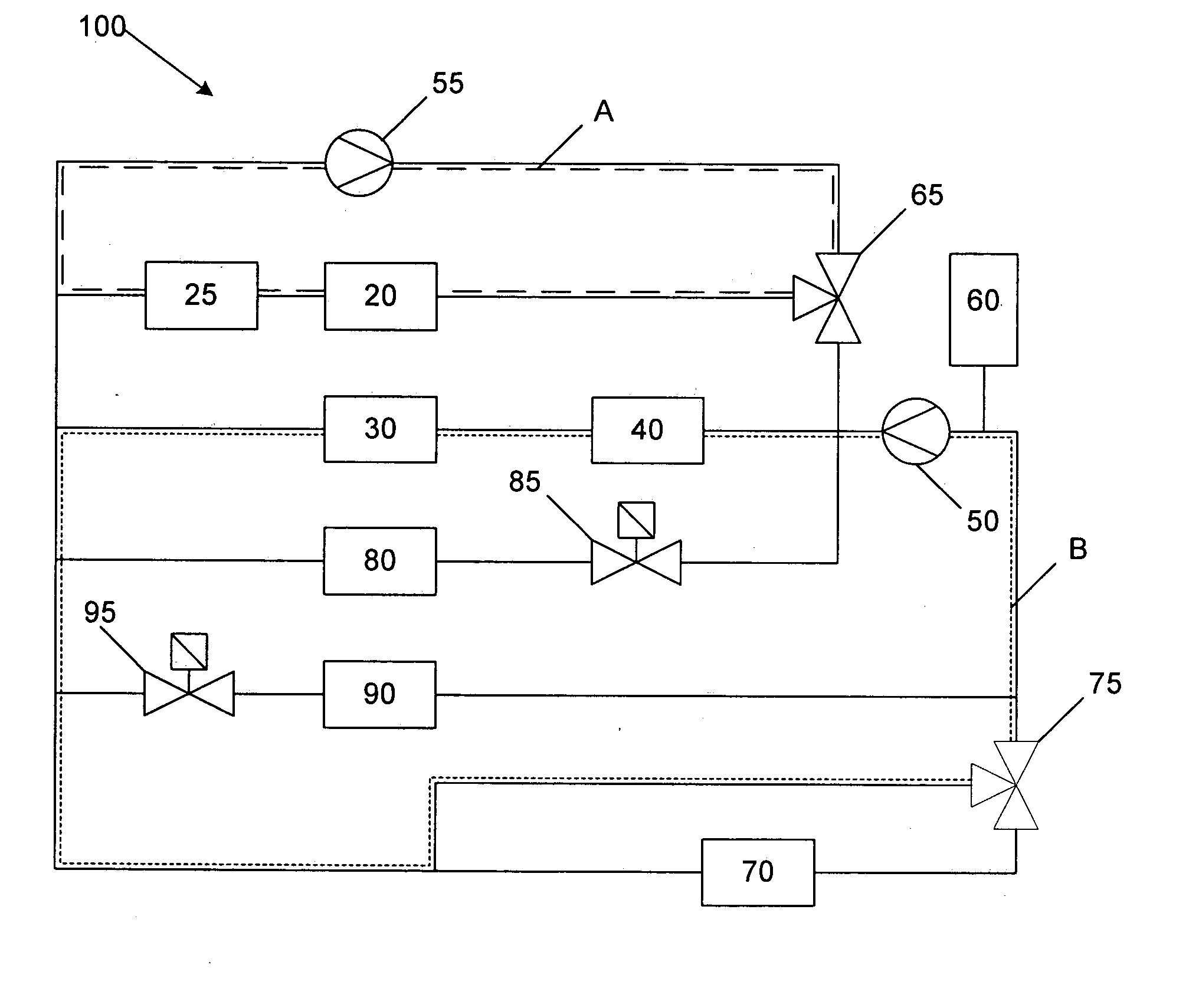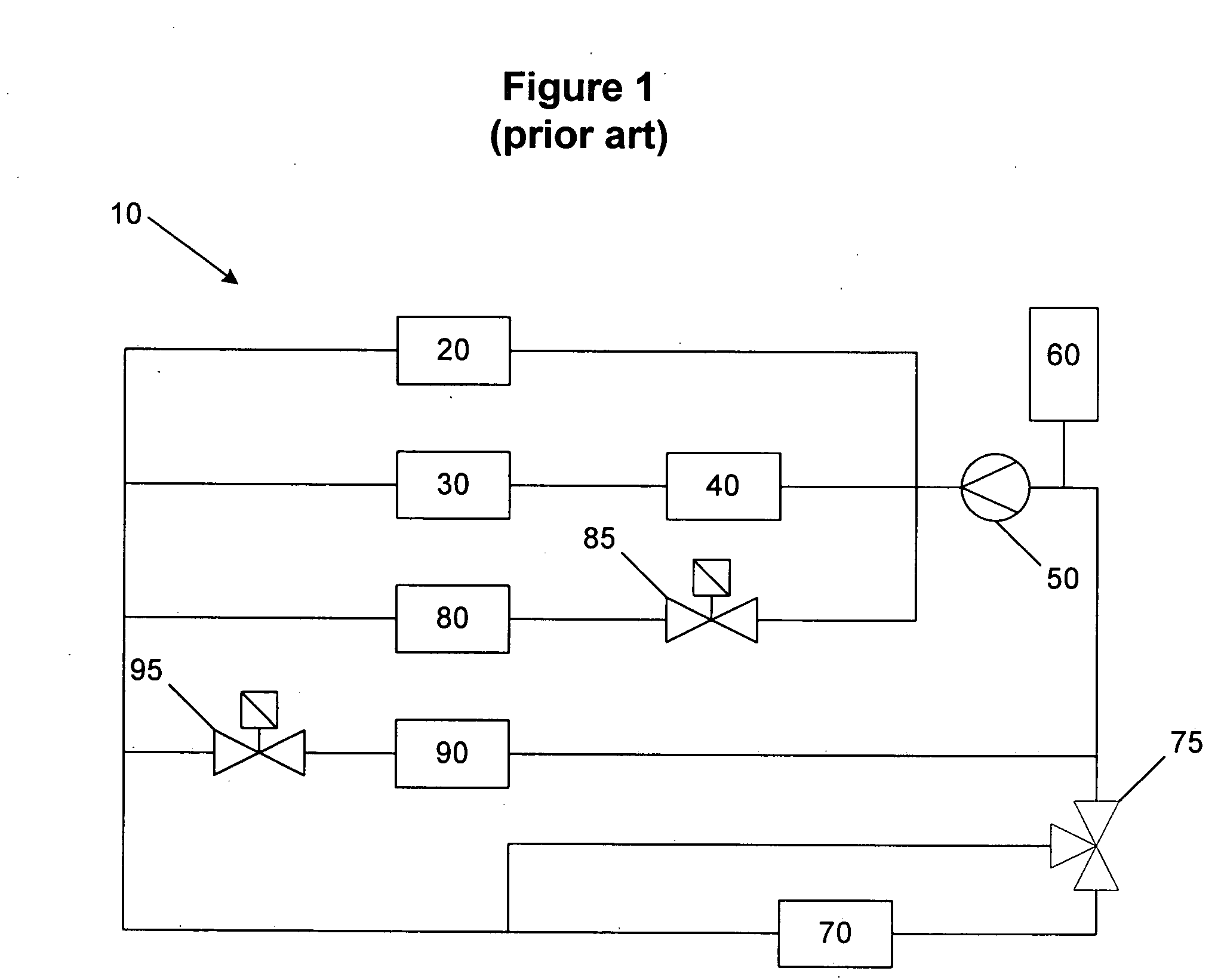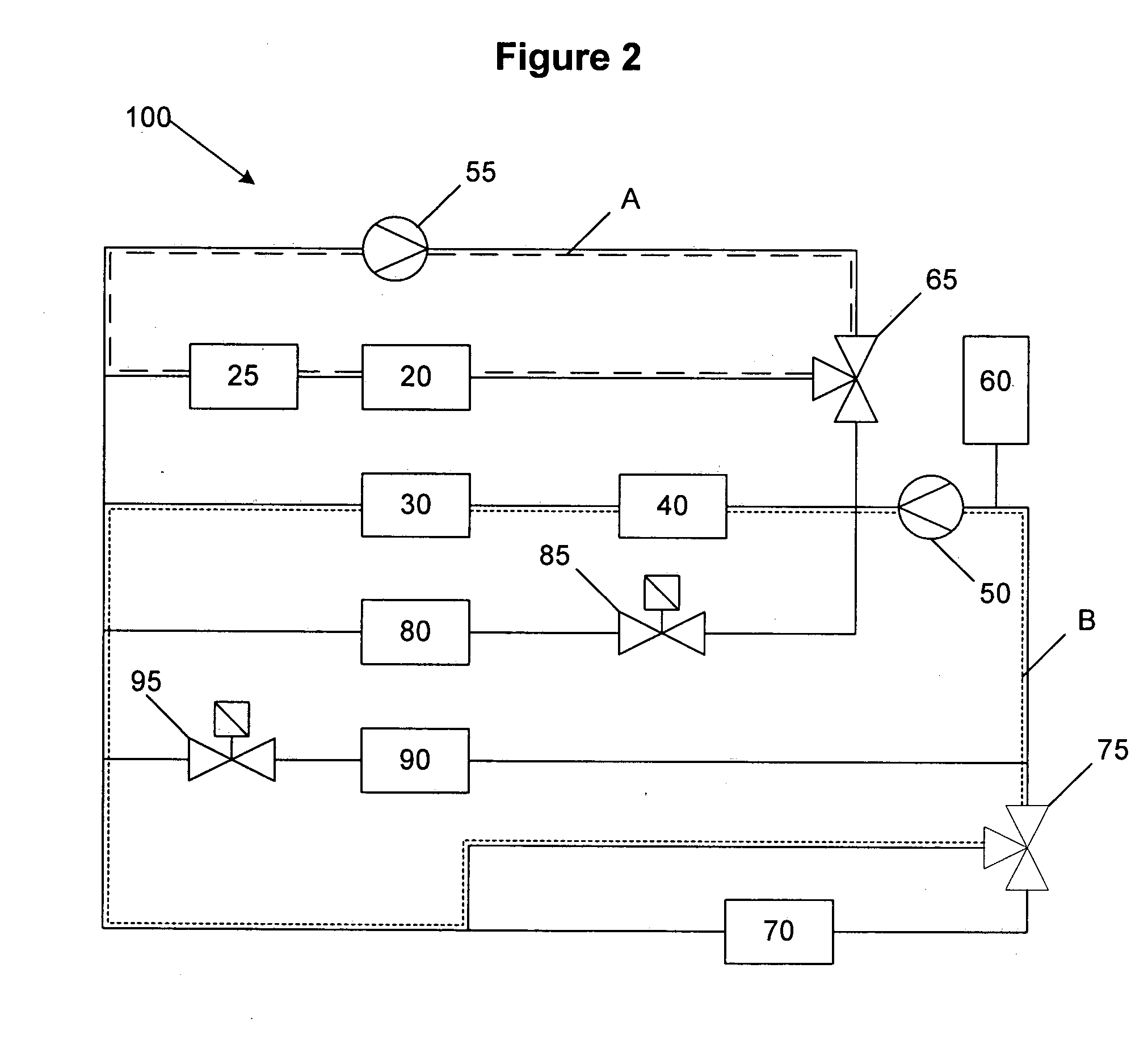Cooling subsystem for an electrochemical fuel cell system
a fuel cell and subsystem technology, applied in the field of electrochemical fuel cells, can solve the problems of detrimental effects of local heating within the stack on the stack, and achieve the effects of reducing the volume of coolant, quick bringing the temperature of the stack, and improving start-up tim
- Summary
- Abstract
- Description
- Claims
- Application Information
AI Technical Summary
Benefits of technology
Problems solved by technology
Method used
Image
Examples
examples
[0037] A test chamber was constructed as illustrated in FIG. 4 to illustrate the effect of reduced coolant volumes on efficiency and time to bring fuel cell systems from freezing and subfreezing temperatures to normal operating temperatures. Three coolant paths were constructed, namely coolant path D, coolant path E and coolant path F. A pump 50 pumped coolant through a flow meter 35 and fuel cell stack 20 through coolant paths D and E. Coolant path E further comprises coolant reservoir 60, heater 25, and heat exchanger 45. A chilled coolant from station was directed through heat exchanger 45 as illustrated by black arrows. Coolant path E is illustrative of a conventional fuel cell system and coolant path D represents a reduced coolant volume obtained by bypassing non-essential components in a fuel cell stack though still using a one-pump system. A separate coolant path F having a stack pump 55 was used to compare the effect of a two pump system and an even smaller coolant volume du...
PUM
 Login to View More
Login to View More Abstract
Description
Claims
Application Information
 Login to View More
Login to View More - Generate Ideas
- Intellectual Property
- Life Sciences
- Materials
- Tech Scout
- Unparalleled Data Quality
- Higher Quality Content
- 60% Fewer Hallucinations
Browse by: Latest US Patents, China's latest patents, Technical Efficacy Thesaurus, Application Domain, Technology Topic, Popular Technical Reports.
© 2025 PatSnap. All rights reserved.Legal|Privacy policy|Modern Slavery Act Transparency Statement|Sitemap|About US| Contact US: help@patsnap.com



